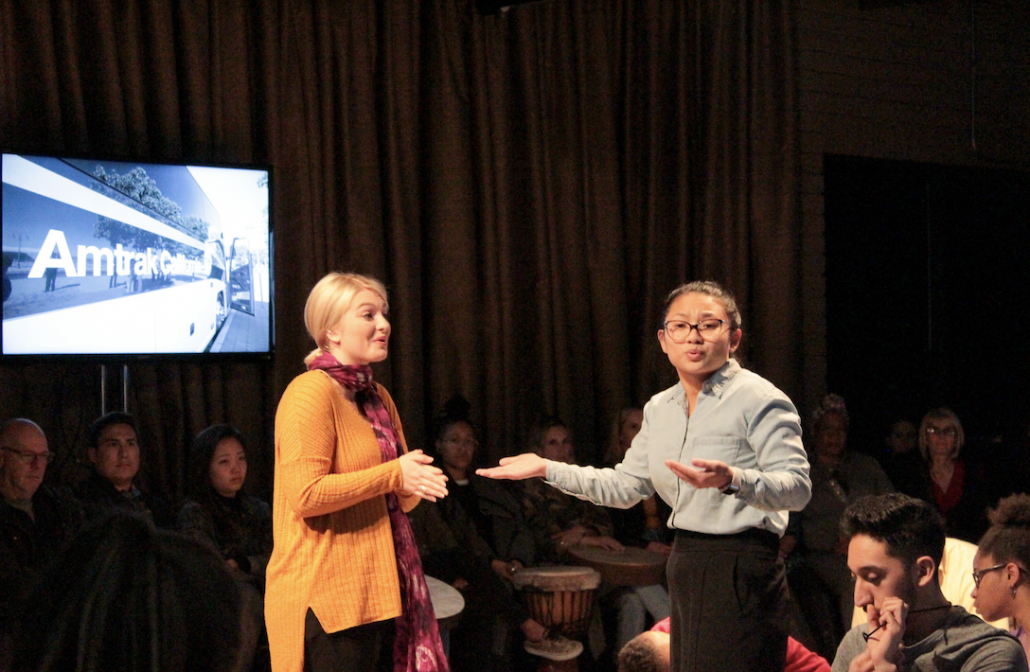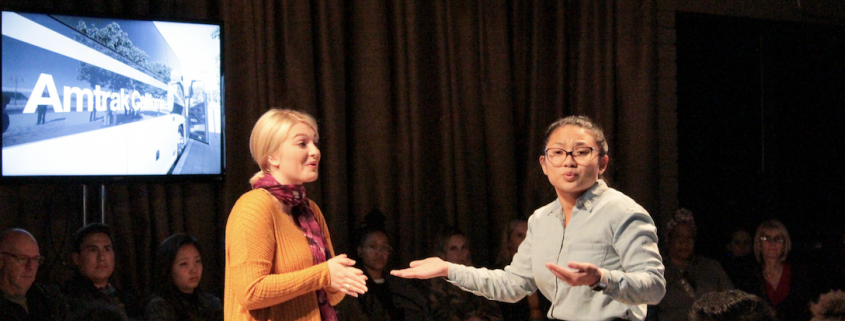‘Race Relay’ offers open environment to discuss relevant topics

Visions and Voices presented the third and final showing of “Race Relay” at the California African American Museum Sunday. The play was co-sponsored by the museum and organized by associate professor of theatre practice Anita Dashiell-Sparks, Price Director of Diversity and Inclusion Initiatives LaVonna Lewis and associate professor of film and television production Helaine Head.
“Race Relay” is an interactive theatrical multimedia project about race relations by writer and director Denise Hamilton. Since its creation in 2005, the production has been developed for four different locations. The CAAM performance incorporates real stories on race directly from the USC community, alongside various media meant to prompt introspection and conversation.
The seating arrangement in the theater immediately made it clear that this would not be a traditional performance. All of the chairs formed a circle, so guests faced one another while watching the performance in the center of the circle.
The performance commenced with instruction from Christo Pellani, a drummer/percussionist who prompted the audience to pick up the percussion instruments under their seats and play to his beat. Music and movement were woven through the entire performance, which aimed to unify the audience.
“See how the drums are bringing us all together in here … We are creating this unity, no matter what our age, our background,” Pellani said.
After the music died out, six actors entered the circle and related stories about racism experienced by all minorities.
Jessica Burgess, a freshman theatre major, shared a real blog post created by a white mother raising black children. In it, the mother tries to explain the reality of racism to other white people who have never directly experienced it.
“The reason why the phrase ‘all lives matter’ is offensive to black people is because it isn’t true,” the blog post read. “Right now in America, my black children are treated differently than my white children, so when you say ‘all lives matter’ in response to the phrase ‘black lives matter,’ you are completely dismissing the mere daily experience of racism for those with pigment in their skin.”
Following the performance, the audience was able to speak directly with some of the actors about race in America. Audience members were given the opportunity to ask the two black male actors about their experiences as black men in America.
“I am a mom of two young black males,” one woman asked. “How do you feel going to school, going to work everyday being black? How does it truly make you feel?”
In response, Taylor Rivers, a junior majoring in theatre, reflected on how he constantly feels judged by authority figures at school
“For me, growing up was a challenge,” the actor said. “You can look at life half-empty or half-full, and I found it to be a good challenge for everyone above me to say, ‘This man can’t do anything’ and always proving them wrong.”
Audience members were then invited to be courageous and share their own experiences and thoughts on race, whatever they may be, with the room.
“I’m sitting here feeling really emotional and really helpless,” one woman said of the racial landscape in the U.S. “I think that’s because I’m white and I’ve had my own relationships with different people of color and I don’t know how to help. I feel really extremely sad and helpless so I could use some advice.”
Kim Montgomery, who attended the show, advised the audience to practice love.
“I really think that’s the thing that we all need to remember whenever we meet someone new, whenever we meet someone different, whenever we meet someone who we may not understand or identify with,” Montgomery said. “We can all relate to love.”
Despite being complete strangers, audience members greeted one another with a smile and were engaging in conversation with their neighbors by the end of the performance — a testament to the power of storytelling and open discourse amid current racial tensions in the United States.

